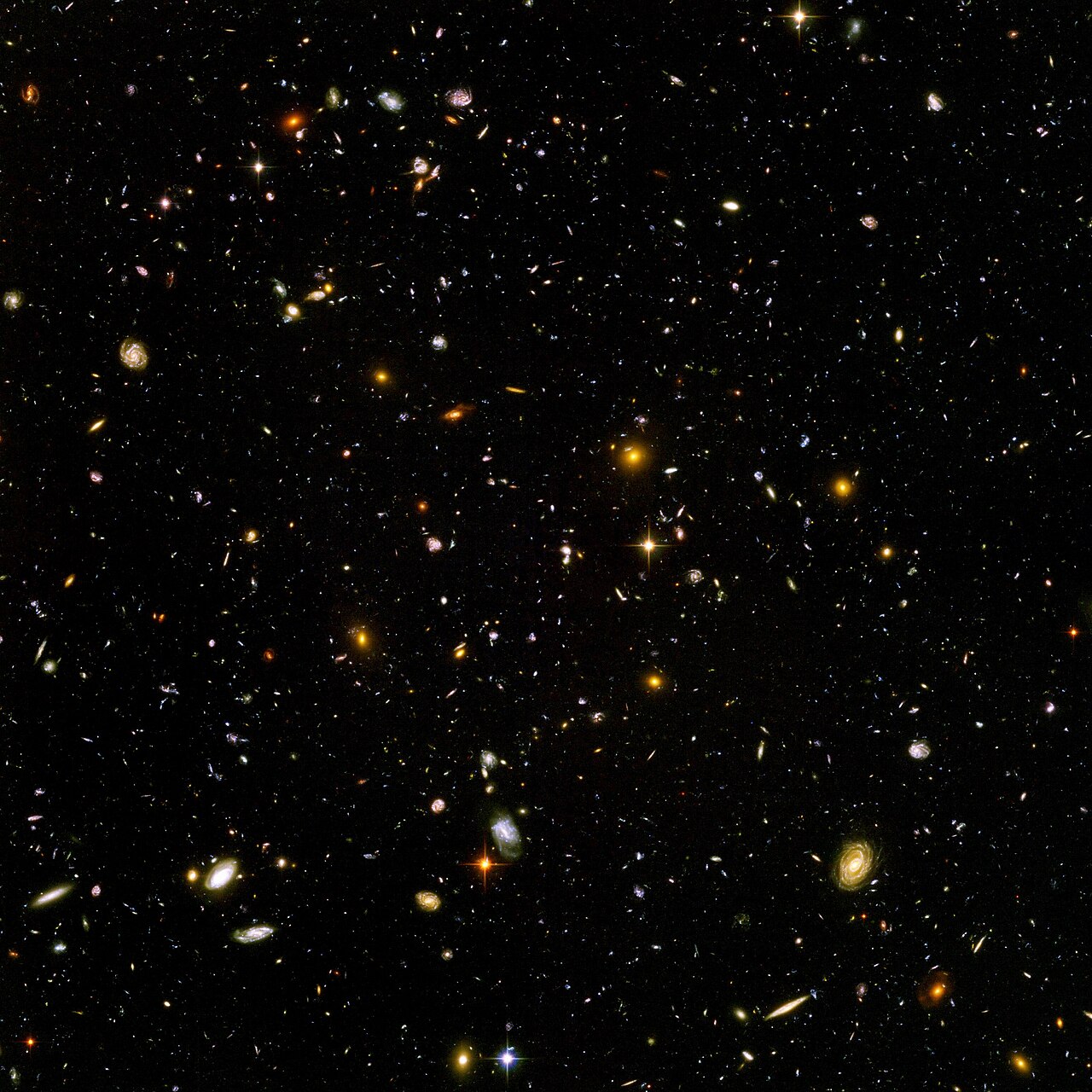On the evening of August 15, 1977, the skies above Delaware, Ohio, were as vast and silent as ever. At the Big Ear Radio Observatory, a sprawling, somewhat ungainly radio telescope built to listen for whispers from the cosmos, a routine night of data collection was underway. The telescope, run by Ohio State University, was engaged in a bold experiment: scanning the heavens for signals that might suggest the existence of extraterrestrial intelligence.
The man on duty was Jerry R. Ehman, a volunteer researcher and astronomer who devoted countless hours to the painstaking work of examining radio data. What he found that night—or rather, the next day as he reviewed the computer printouts—would become one of the greatest enigmas in the history of the search for extraterrestrial intelligence (SETI).
On the continuous stream of numbers and letters representing signal strengths, one particular entry leaped off the page. A burst of radio energy, so powerful and so clean that it exceeded the normal noise of space by orders of magnitude, stood starkly above the rest. With a red pen, Ehman circled the sequence and scribbled the exclamation that gave it immortality: “Wow!”
The Wow! Signal was born—not merely as a data point but as a mystery that has haunted astronomy, philosophy, and human imagination ever since.
Listening for Voices in the Dark
The Big Ear Radio Observatory was not designed for stargazing in the conventional sense. Unlike the glittering images captured by optical telescopes, Big Ear’s purpose was to detect radio signals, invisible waves of energy emitted by celestial bodies—or perhaps by intelligent civilizations.
Radio astronomy had long revealed wonders: pulsars, quasars, the whisper of the cosmic microwave background left over from the Big Bang. But since the 1960s, some scientists had entertained an even more audacious hope: that alien civilizations, if they existed, might use radio waves to communicate. Project Ozma, launched by Frank Drake in 1960, was the first attempt to listen for such signals. Though unsuccessful, it lit a spark. SETI was born as a scientific endeavor, blending rigorous observation with a dream as old as humanity—the dream that we are not alone.
Big Ear joined this effort in the 1970s. Using a special receiver tuned to the 1420 megahertz frequency—the natural emission line of neutral hydrogen—it hunted for narrowband signals. Hydrogen is the most abundant element in the universe, and many researchers reasoned that extraterrestrials, if they wished to be found, might use this frequency as a kind of universal hailing channel.
On that August night, Big Ear was scanning a section of sky near the constellation Sagittarius. It was a routine observation, indistinguishable from thousands of others, until the data suddenly blazed with the unexpected.
The Signal That Should Not Exist
The Wow! Signal lasted for precisely 72 seconds—the maximum duration that Big Ear could detect a signal from a given point in the sky as the Earth rotated. It was extraordinarily strong, peaking at a level that dwarfed the background noise. More importantly, it was narrowband: confined to a tiny slice of the radio spectrum. Natural astrophysical phenomena, like pulsars or quasars, tend to emit across broad ranges of frequencies. A signal this sharp and precise strongly suggested something artificial.
The printout captured the moment in alphanumeric form. Each character represented a level of intensity. Where ordinary cosmic noise hovered around 1s and 2s, the Wow! Signal erupted into letters and numbers that reached a peak of “U”—equivalent to a signal 30 times stronger than the background.
To Ehman’s trained eye, this was extraordinary. Natural explanations seemed inadequate. A passing satellite? Unlikely, given the exact frequency and the absence of known transmissions in that band. A reflection from Earth? Possible, but the signal bore none of the hallmarks of terrestrial interference. For decades, scientists would debate and test every conceivable explanation. None fit perfectly.
It was as if, for a brief and fleeting moment, someone—or something—had whispered directly into our cosmic ear.
Sagittarius: A Cosmic Neighborhood
The Wow! Signal originated from a region of the sky in the constellation Sagittarius, near the globular cluster M55. This is no ordinary patch of sky. Sagittarius points toward the center of the Milky Way, a place crowded with stars, dust, and mystery. It is a bustling galactic neighborhood, one that some have speculated could harbor life.
Yet the precise origin could not be pinned down. Big Ear’s design meant that it observed two adjacent patches of sky at once, like two overlapping beams. The Wow! Signal appeared in one beam but not the other, leaving ambiguity about its exact source. What we know is that it came from somewhere in that rich star field, but where, and from what, remain unknown.
The Search for a Repeat
One signal, no matter how compelling, does not make proof. Science demands replication. For years after 1977, astronomers turned their instruments back toward the Wow! Signal’s coordinates, hoping to hear it again. They listened with Big Ear. They listened with other telescopes. They listened for decades.
The universe, however, remained silent. The signal never repeated.
This absence deepened the mystery. If it were a natural phenomenon, one might expect it to recur. If it were human-made interference, one might expect other anomalies to arise. Instead, the Wow! Signal was a singular event, appearing once and then vanishing forever.
The silence raises profound questions. Was it a transmission deliberately sent once, perhaps as a test? Was it a rare cosmic event we still do not understand? Or was it, as some skeptics suggest, simply a fluke—an unusual alignment of natural noise or terrestrial interference?
The truth remains elusive.
Scientific Caution and Human Imagination
From the moment of its discovery, the Wow! Signal straddled the line between sober science and thrilling speculation. For Ehman himself, caution prevailed. He was fascinated but never convinced that it was proof of extraterrestrial intelligence. He leaned toward the possibility of some unknown terrestrial source, though no clear candidate was ever identified.
Other scientists were more willing to entertain the idea of alien origin. The strength, the narrow frequency, the location—it all matched what SETI had long imagined a deliberate signal might look like. Yet science could not cross the threshold from possibility to certainty without repetition, without corroboration.
Still, imagination soared. The Wow! Signal became a cultural icon, referenced in books, films, and art. It embodied the tantalizing possibility that somewhere, out there, another intelligence had reached across the void, however briefly, to touch us.
Attempts at Explanation
Over the years, researchers proposed numerous explanations. Some suggested it was a passing satellite, though none were known to transmit on that frequency. Others proposed reflections of Earth-based signals off space debris, though the characteristics did not fit neatly.
In 2017, one controversial hypothesis emerged: that the Wow! Signal was caused by hydrogen emissions from a pair of comets passing through the area at the time. Comets can emit radio signals at the hydrogen line. But this explanation faced significant skepticism, as comets generally do not produce such strong, narrowband bursts.
Thus, the Wow! Signal remains unclaimed, a puzzle without consensus.
What It Means to Us
Beyond the technical debates, the Wow! Signal resonates on a deeper level. It taps into a fundamental human yearning: the desire to know if we are alone. For millennia, we have looked at the stars and wondered. The Wow! Signal was the closest we have ever come to hearing an answer.
Even as a mystery, it has shaped SETI. It taught scientists the value of persistence, the need for rigorous methodology, and the importance of humility in the face of cosmic riddles. It also inspired public fascination with the search for life beyond Earth, keeping alive the dream of cosmic companionship.
Perhaps most importantly, it reminds us that even in an age of advanced technology, the universe still holds secrets that can astonish and unsettle us.
The Silence That Speaks
In the decades since 1977, no signal of equal mystery has been detected. SETI has grown more sophisticated, with powerful new telescopes, vast computing power, and global collaborations. Yet the Wow! Signal still stands alone, a solitary beacon in the data.
This silence raises profound questions. Is intelligent life exceedingly rare, perhaps unique to Earth? Or is it common but cautious, choosing not to reveal itself? Or is it speaking in ways we cannot yet understand?
The Wow! Signal could be a cosmic accident, or it could be the faint echo of something extraordinary. Either way, it forces us to confront our place in the universe—not as passive observers but as seekers, always listening, always hoping.
Legacy of a Whisper
Jerry Ehman, who marked the fateful “Wow!” in red pen, has always remained cautious, never claiming more than the data warrants. Yet even he admits the signal remains the most intriguing anomaly in the history of SETI. For the world, it has become more than a scientific curiosity. It is a symbol of possibility, of the thin line between silence and revelation.
When we think of the Wow! Signal, we are reminded that the universe is not fully known, that mysteries await in the depths of the sky. It stands as both a challenge and an invitation: to keep listening, to keep searching, to keep imagining.
In that 72-second burst, something happened that defied easy explanation. It may have been a trick of nature or a fleeting brush with the extraordinary. Either way, the Wow! Signal remains a story of wonder—an echo that continues to call us to the stars.
Beyond Wow
As our technology advances and we send probes to distant planets, as we peer deeper into galaxies with instruments like the James Webb Space Telescope, the Wow! Signal still lingers as a benchmark. It reminds us that sometimes the most profound mysteries do not come with clarity but with questions that refuse to be answered.
The Wow! Signal is not just about whether aliens exist. It is about the human spirit—the courage to listen to the unknown, the humility to admit uncertainty, and the audacity to dream that one day the silence of the cosmos may break, and we may finally know that we are not alone.






